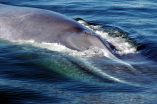People with blood groups A, B and AB at higher risk of type 2 diabetes than group O
2014-12-19
(Press-News.org) A study of more than 80,000 women has uncovered different risks of developing type 2 diabetes associated with different blood groups, with the biggest difference a 35% increased risk of type 2 diabetes found in those with group B, Rhesus factor positive (R+) blood compared with the universal donor group O, Rhesus factor negative (R-). The study is published in Diabetologia (the journal of The European Association for the Study of Diabetes) and is by Dr Guy Fagherazzi, and Dr Françoise Clavel-Chapelon, Center for Research in Epidemiology and Population Health, INSERM, Villejuif, France, and colleagues.
While previous studies have investigated the links between blood group and stroke (finding an increased risk for group AB versus group O), those on blood groups and their link with diabetes have been small and thus underpowered and unable to provide definitive results. In this new research, Fagherazzi and colleagues took data from 82,104 women from the large prospective E3N cohort in France* followed between 1990 and 2008. The objective of this study was to evaluate the relationship of ABO blood type (A, B, AB and O), Rhesus factor (positive or negative) and a combination of the two (ABO×Rhesus) with type 2 diabetes (T2D).
The results showed that, compared with women with group O blood, women with group A were 10% more likely to develop T2D, and those with group B 21% more likely (both statistically significant). The AB group was 17% more likely to develop T2D, but this result was not statistically significant. When looking solely at R+ versus R- women, neither group was at increased risk of developing T2D compared with the other.
The authors then combined ABO group and Rhesus group and compared each possible combination with O negative (O-), which is known as the universal donor group because since it contains none of the A. B, or Rhesus antigens, blood from people in this group can be successfully donated to any other group (without rejection).
Compared with O- women, the highest increased risk of developing T2D was found in B+ (35% increased risk), followed by AB+ (26%), A- (22%), A+ (17%). The results for O-, B-, and AB- groups were not statistically significant.
Dr Fagherazzi says: "The present study shows for the first time in a large prospective cohort that specific ABO blood groups are associated with an increased type 2 diabetes risk." The authors say that the reasons behind the association are currently unknown, but could be related to a number of factors: it has been suggested that the human ABO locus might influence endothelial or inflammation markers. ABO grouping is also associated with various molecules known to be connected to T2D, and a recent paper concluded that ABO grouping is a factor which determines the overall gut microbe composition, which in turn affects metabolism and thus could be related to T2D.
Dr Clavel-Chapelon notes: "Our study population included only women but, to our knowledge, no biological mechanisms are likely to explain a sex-dependent association. Information on the participants was self-reported but this is unlikely to substantially affect the results. This is the first study to investigate a relationship between blood type and type 2 diabetes risk using such a large cohort size and a prospective design."
Dr Fagherazzi concludes: "Our findings support a strong relationship between blood group and diabetes risk, with participants with the O blood type having a lower risk of developing type 2 diabetes. Therefore, the effects of blood groups should be investigated in future clinical and epidemiological studies on diabetes. Further pathophysiological research is also needed to determine why the individuals with blood type O have a lower risk of type 2 diabetes."
INFORMATION:
The E3N study is a French prospective cohort study of 98,995 female teachers initiated in 1990, to study risk factors for chronic diseases.
ELSE PRESS RELEASES FROM THIS DATE:
2014-12-19
A Ugandan doctor, who contracted Ebola in Sierra Leone, survived after being flown to Germany for aggressive treatment involving a new drug under clinical development for vascular leakage [1]. Dr Timo Wolf and colleagues, from University Hospital Frankfurt in Germany, detail the successful intensive-care treatment the doctor received under biosafety level 4 conditions in an Article published in The Lancet.
On 28 September, 2014, the 38-year old doctor, who was in charge of an Ebola virus treatment unit in Lakka, Sierra Leone, developed a fever and diarrhoea. He tested ...
2014-12-19
Prostaglandin analogue eye drops, the most commonly prescribed treatment for glaucoma, can greatly reduce risk of vision loss in people with open angle glaucoma (OAG), one of the leading causes of blindness, according to the first placebo-controlled trial to assess their vision-preserving effect published in The Lancet.
"Medication to lower raised eye pressure has been used for decades as the main treatment for OAG to delay progressive vision loss. But, until now, the extent to which the most frequently prescribed class of pressure-lowering drugs (prostaglandin analogues) ...
2014-12-19
Highlight
Kidney donors with hypertension had slightly fewer nephrons (the kidney's filtering units) at the time of donation than similarly aged donors with normal blood pressure; however, 6 months following their surgery, hypertensive and non-hypertensive donors both maintained excellent blood pressure control and had similarly robust compensatory kidney responses.
Nearly 6,000 people donate a kidney in the United States each year.
Washington, DC (December 18, 2014) -- With proper monitoring, kidney donation may be safe for individuals with high blood pressure, according ...
2014-12-18
Struggling to balance on one leg for 20 seconds or longer was linked to an increased risk for small blood vessel damage in the brain and reduced cognitive function in otherwise healthy people with no clinical symptoms, according to new research in the American Heart Association's journal Stroke.
"Our study found that the ability to balance on one leg is an important test for brain health," said Yasuharu Tabara, Ph.D., lead study author and associate professor at the Center for Genomic Medicine at Kyoto University Graduate School of Medicine in Kyoto, Japan. "Individuals ...
2014-12-18
WINSTON-SALEM, N.C. - Dec. 18, 2014 - State and local enforcement of federal immigration laws can have an adverse impact on the use of health care services by immigrant Hispanics, according to a North Carolina-based study by Wake Forest Baptist Medical Center researchers.
The study, published in the Dec. 18 issue of the American Journal of Public Health, analyzed both birth records and information collected in focus groups and individual interviews.
"Our findings suggest that immigration enforcement policies negatively affect the health of immigrant Hispanics, including ...
2014-12-18
An investigation into factors related to disparities of depression in young adults has found that higher parental education - which has a protective effect for white youth - can also increase the risk of depression for black youth. The MassGeneral Hospital for Children (MGHfC) study published online in the Journal of Pediatrics also found that, among high-socioeconomic-status black youth, greater perceptions of being discriminated against cancelled out the protective effects of parental education.
"High socioeconomic status (SES) - particularly higher parent education ...
2014-12-18
Before Charlotte the spider spelled the word "humble" in her web to describe Wilbur the pig, she told Templeton the rat that the word meant "not proud."
That's probably what most people say if you put them on the spot. But if you give them time to think about it deeply, like a new study just did, other themes emerge that have a lot to do with learning.
And these intellectual dimensions of humility describe the spider as well or better than the pig.
"Wilbur has many of the dimensions of humility in general: regard for others, not thinking too highly of himself - but ...
2014-12-18
Auroras are the most visible manifestation of the sun's effect on Earth, but many aspects of these spectacular displays are still poorly understood. Thanks to the joint European Space Agency and NASA's Cluster mission combined with data from a past NASA mission called the Imager for Magnetopause-to-Aurora Global Exploration, or IMAGE, a particular type of very high-latitude aurora has now been explained.
Known as a theta aurora -- because seen from above it looks like the Greek letter theta, an oval with a line crossing through the center -- this type of aurora sometimes ...
2014-12-18
ITHACA, N.Y. - To encode data, today's computer memory technology uses electric currents - a major limiting factor for reliability and shrinkability, and the source of significant power consumption. If data could instead be encoded without current - for example, by an electric field applied across an insulator - it would require much less energy, and make things like low-power, instant-on computing a ubiquitous reality.
A team at Cornell University led by postdoctoral associate John Heron, who works jointly with Darrell Schlom, professor of Industrial Chemistry in the ...
2014-12-18
Scientists from WCS (Wildlife Conservation Society), the Universidad Austral de Chile, the Blue Whale Center, the American Museum of Natural History (AMNH), NOAA, and other organizations are examining molecular clues to answer a big question: how many types of blue whales exist in the waters of the southeastern Pacific?
The answer seems to be two distinct populations, according to a genetic study comparing the blue whales off the southern coast of Chile with those swimming in the waters of Antarctica and other nearby regions. One of the populations could be made up of ...
LAST 30 PRESS RELEASES:
[Press-News.org] People with blood groups A, B and AB at higher risk of type 2 diabetes than group O

